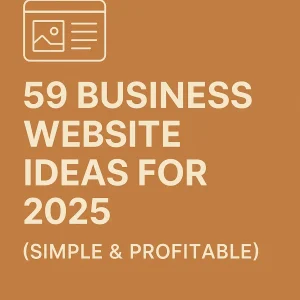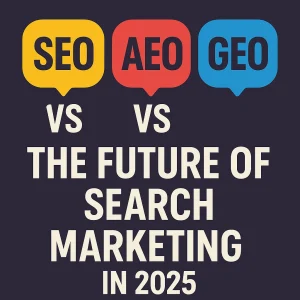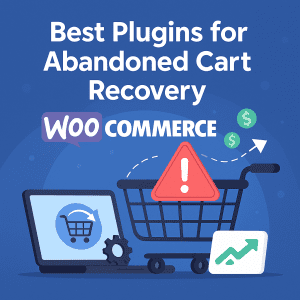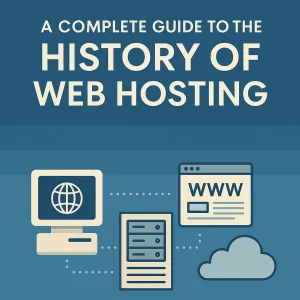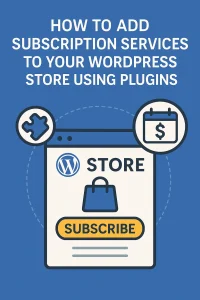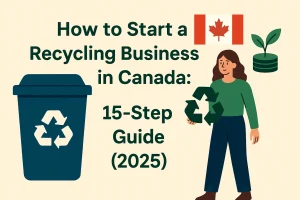 Ever dream of setting up a business that not only yields financial profits but also changes the world for the good? Well, you just have found yourself in the right place! Starting a recycling business in Canada is a great way to carve out that space for your little one to be green while darlling in a growing market. With sustainability being the big thing, 2025 really would be a great year to start joining the recycling bandwagon.
Ever dream of setting up a business that not only yields financial profits but also changes the world for the good? Well, you just have found yourself in the right place! Starting a recycling business in Canada is a great way to carve out that space for your little one to be green while darlling in a growing market. With sustainability being the big thing, 2025 really would be a great year to start joining the recycling bandwagon.
God, only He really knows its greatness, might have bestowed Canada with a beautiful terrain, but with waste management comes the greatest of challenges. We are actually one of the countries in the world that produce waste most per person! Sounds bit of a downer, but it is also an enormous opportunity for bright and passionate people like you to step in and help. Canada, meanwhile, recycles only 28% of all the waste generated by its residents, thus, demanding drastic interventions in innovative technologies and processes. So, if you are ready patients to overhaul the scrap business into treasure: Let us begin with a 15-step guide to help you establish a recycling business in Canada. To ensure consistency and visibility, always have the best web hosting service in Ontario for your online presence as you take your first footsteps.
Step 1: Discover Your Niche – What Kind of Recycling Guru Will You Be?
Before embarking on a waste-gathering spree, you ought to choose the kind of waste recycling business best suited to your personality. Waste management, however, is indeed an exotic thing! Do you fancy:
- Residential curb side collection: The classic "blue box" model, although it may be put to uncommon uses or focused on more difficult-to-recycle items.
- Commercial waste management: Targeting businesses, offices, and industrial sites for their recyclable materials--from cardboard to specialized industrial waste.
Specific materials recycling: Building a name around one or two types of materials such as:
- Plastics--much in demand for recycling, yet Canada recycles plastic at a rate lower than 9%. Perhaps you could target PET, HDPE, or an even nicher plastic.
- E-waste--These contain valuable metals and harmful substances that need to be recycled properly.
- Construction and Demolition (C&D) waste: Concrete, wood, metal--huge volumes of waste are often reusable or recyclable.
- Organic Waste/Composting: Making nutrient-rich compost out of food scraps and yard waste.
- Textile Recycling: Giving new life to old clothes and fabrics.
- Items that are hard to recycle, such as batteries, lightbulbs, paint, etc.--items that, more often than not, end up in landfills but do have dedicated recycling streams.
- Brokerage: Connect businesses that have large amounts of recyclable materials with the processing facilities.
Do your research on local market needs. Are there, at present, any gaps in rubbish removal service Trenton or other cities that you are looking into? What type of waste is in excess in the area you want to target?
Step 2: Research– Know Your Market & Your Mates
Perhaps it is time for you to play detective! You need to look at the recycling landscape in Canada.
- Local demand: What are the materials that people and companies are having difficulty recycling in your chosen area? Are there specific industries generating quite a bulk of that particular waste stream?
- Competition: Who are the existing players? What services do they provide? How do you plan to position yourself differently?
- Potential customers: Individuals, businesses, industrial establishments, construction companies-whom do you identify to be using your service?
- End markets: Very important!! Where will your recycled materials go? Do you have buyers for the processed materials? Could be a manufacturing company, a recycling company, or should we say an artistic venture that creating things using recycled materials.
Step 3: Blueprint Rewrite – The Business Plan
Any successful venture needs a concrete plan. Your business plan would be your roadmap on the way to success. It should address:
- Executive Summary: High-level overview of your business idea.
- Company Description: What do you do, your mission, and your vision?
- Market Analysis: Your research from Step 2, on the target market to address, competition, and opportunities.
- Services: What exactly are you marketing?
- Marketing & Sales Strategy: How are you going to attract customers?
- Operations Plan: How are you going to collect, sort, process, and transport materials? This includes equipment, staffing, and facility needs.
- Management Team: Who is on your dream list?
- Financial Projections: Start-up costs, income projections, profits, and losses. And be realistic!
A good business plan works for you; but for someone needing funding, it is the only appropriate document that could be used.
Step 4: Legal Eagle – Registering Your Business & Getting Licenses
Today, I must make it official!
- Business Name Registration: Let's get that snappy, memorable name that mirrors your green cause.
- Business Structure: Do you get to determine if you are a sole proprietor, partnership, corporation, or co-operative? All have different provisions in law and tax. Consult with a legal professional.
- Federal and Provincial Registration: You need to register with both the federal government and your provincial government for a business (i.e., Ontario, British Columbia, Quebec).
Permits and Licenses: This is a big one for recycling! You'll likely need:
- Environmental Permits: These are critical. Depending on the materials you handle and your operations, you'll need permits from provincial environmental ministries. For example, in Ontario, you might need Environmental Compliance Approval (ECA) or register with the Environmental Activity and Sector Registry (EASR).
- Waste Generator Registration: If you handle certain types of waste, you might need to register as a waste generator.
- Transportation Permits: If you're hauling waste, you'll need to comply with transport regulations.
- Local bylaws - check with your municipality regarding any specific permits or zoning requirements for a recycling facility.
Don't skip this step! Penalty for not-compliance can really hurt.
Step 5: Show me the money: Getting funding
Recycling businesses require a big initial investment. Here are some all-important gateways to channel resource access:
- Self-funding/Bootstrapping: If you have the cash, this gives you complete control.
- Bank Loans: Usually small business loans offered by Canadian banks.
- Government Grants and Programs: Canada embraces green lots. Check for all the federal and provincial de facto grants and even municipal grants for environmental business and waste reduction or circular economy projects. For instance, in BC, the Capital Regional District offers Waste Reduction Grants. Natural Resources Canada also has various funding and incentive programs in clean energy and green infrastructure.
- Venture Capital/Angel Investors: If you have a highly scalable and innovative business model, this could be an option.
- Crowdfunding: This is a very good way to understand initial public interest and raise capital.
Prepare an excellent pitch, stressing the environmental and economic benefits of your business.
Step 6: Equip Your Operation for Success
This step is staged before the actual formation of the vision into physical substance: Gear Up!
- Collection Vehicles: According to your category, use trucks or trailers or have specialized vehicles for collections.
- Sorting Equipment: Conveyors, sorting lines, balers, shredders, compactors- the kind of equipment will depend on the materials you process.
- Storage Containers: Bins, dumpsters, gaylords, and secure storage for different materials.
- Safety Materials: PPEs for you and your team. Safety gear is something people can't avoid.
- Facility Space: You'll need a good place to collect, sort, and temporarily store materials. Think about truck accessibility point, zoning restriction, and how close you are from the market and end buyers.
After all, good investments in durable and quality equipment will all be worth it in the future.
Step 7: Build Your Green Team – Hiring Staff
You can't handle it all on your own!
- Operators: Human resources who would run the machines and perform materials management.
- Drivers: If you are doing collections.
- Sorters: People trained to identify and sort various recyclable materials.
- Administrative Staff: Work to secure bookings, inquiries, and paperwork.
- Marketing & Sales: Spread the word and bring clients in.
Search for one who has the same passion for sustainability and is trustworthy and hardworking, then provide enough training; safety is really important.
Step 8: Go Digital - Build Your Online Presence
No negotiating when it comes to being online in 2025. This is where 4GoodHosting comes in!
- Website: This is your online storefront. Your site should be:
- Informative: Clearly describe who you are, what you collect, where you service, and costs.
- User-friendly: You make it easy for customers to navigate.
- Visually appealing: Clean and professional-thus showing your commitment to the environment.
- SEO optimized: Use keywords such as "recycling services Canada," "plastic recycling Ontario," "e-waste disposal Vancouver," etc., so people can find you easily.
- Website Builders: You won't have to be a phenomenal coder! Things like Wix and Squarespace have tremendous professional-looking template sites for the easy drag-and-drop way. Furthermore, their built-in SEO tools will come in handy.
- Best Web Hosting: Reliable and fast web hosting for Canadian businesses. For example, 4GoodHosting has excellent services, with data centers found in Canada, ensuring fast loading for its Canadian consumers. Look for good uptime guarantees (99.9% or higher!), solid security, and excellent customer support.
- Social Media: They will engage you in your own community through Facebook, Instagram, LinkedIn, and even TikTok. Share recycling tips, behind-the-scenes glimpses of your operations, and success stories.
- Google My Business: Optimize your summary on this profile to make it appear in local search results. It's that critical for those customers whose types are looking for "recycling near me."
Step 9: Optimize Your Operations – Efficiency is Key!
Once you get through the first upstarts and they are all ready, having your processes functioning as a fine-tuned machine will be the requirement for both profit and sustainability.
- Inventory Management Software: Tracking incoming materials, stockpiled materials, and outgoing shipments can be extremely difficult. Well-designed software in the recycling industry - Waste Logics, GreenSpark, Nexus, ScrapWare, Class 3 - will track fairly well all inputs, purchases and sales, accounting, reports, and even much more multiplied by exposure to real-time data through cloud-based and indispensable reporting.
- Route Optimization Software: Collecting these can save you a fortune in gasoline and offer time savings as well.
- Sorting Equipment: Install sorting systems for the separation of materials to recover value and at the same time reduce contamination.
- Equipment Maintenance Schedule: Maintain your equipment's sound health to avoid expensive breakdowns.
Step 10: Bog Down the Marketing Feature-Spread Your Word There!
A recycling business would completely fail without anyone knowing about it.
- Partner with Local Businesses: Work together with local businesses, municipalities, schools, community organizations to develop special pricing or educational programs.
- Pay-Per-Click advertising: Target a particular geographical area for specific demographic consumers by using Google Ads and social media advertising.
- Content Marketing: Make blog posts, videos, and infographics about recycling: why recycling is important, how your services work, and the difference your services make.
- PR: Try to get some coverage in the local news about your company's story, mission, etc.
- Referrals: Tell happy customers to tell other people.
- Feature Your Impact: Tell people how much waste you are diverting from landfills and how much environmental good it brings to our operations. People like supporting businesses that are doing good things!
Let's spice things up a little bit with more detail, more urgency, and practical advice for the critical steps!
Step 11: Forge Powerful Alliances – Your Network of Buyers & Suppliers is Your Gold Mine!
In the recycling world, your success is not just based on what you collect, but rather who you know and how well you connect the dots. Having strong, reliable relationships with the sources of your materials and the destinations for your finished goods is an absolute non-negotiable. Consider yourself as the ultimate connector in the circular economy!
- Lock Down Rock Solid End Markets for Your Recycled Goods: This is perhaps the most critical part of your business. If you do not have a steady stream of buyers for your processed materials, all you're doing is collecting waste!
- Diversify Your Buyers: Never put all your eggs in one basket. Try to have multiple buyers for each material stream you process. If one buyer is having fluctuations in demand or other issues, you will immediately have alternatives that you can sell to.
- Sign Long-Term Contracts: Where possible, get the longest contract you can negotiate. These contracts give you stability, add predictability to your revenue stream, and may even go a long way to help secure financing or investments on your part by assuring them of a ready market for your output.
- Emphasize Quality: Your buyers will know you by the quality and purity of your recycled materials. Contaminated materials will not get accepted anywhere. You should invest in sorting and quality control to have your materials meet specifications. The higher the quality, the better price!
- Know the Buyers Oddities: Talk to your potential buyers. What are their specifications? What is their required tonnage? How would they want the materials baled or packed? Producing to fit their exact whims lists you as a preferred vendor.
- Consider International Markets: Canada has a growing demand for recycled content, but don’t hesitate to check out international buyers where it makes economic sense and logistics allow.
- Foster Strong Relationships with Material Suppliers: Equally important as selling your products is guaranteeing raw materials' steady inflow into your premises. Your raw materials are your bread and butter!
- Proactive Outreach: Don't wait for the waste to come to you. Instead, go out and seek businesses, industrial facilities, construction companies, demolition firms, and municipalities. Offer them solutions for their particular waste streams.
- Tailored Solutions: Understand their pain points. Do they need specific bin sizes? Flexible pick-up schedules? Data on their diversion rates for CSR reports? Offer services that genuinely solve their waste management challenges.
- Competitive Pricing & Transparency: Be competitive with your pricing for collection services, and be transparent about your processes and what you can offer.
- Reliability is Key: Show up on time, every time. Provide excellent customer service. Businesses need a waste partner they can trust to handle their materials efficiently and compliantly.
- Partnerships with Waste Generators: Consider forming strategic partnerships where you might offer a discount for exclusive access to certain waste streams, or co-invest in on-site sorting equipment.
- Network Relentlessly – Your Industry Connections are Priceless: Recycling and waste management is a community, and it is highly valuable to form strong professional relationships in it.
- Attend Industry Events: Bookmark trade shows, conferences, and seminars like Waste & Recycling Expo Canada and provincial waste management association events. These are perfect opportunities to meet potential buyers, suppliers, equipment providers, and even future collaborators.
- Join Possible Associations: Getting involved with groups such as Recycling Council of Ontario, Waste & Recycling Association of British Columbia, and the Canadian Plastics Industry Association provides useful tools and insights, as well as opportunities to network, to the members. It will also keep members informed about best practices and trends.
- Online Professional Networks: Use LinkedIn to interact with professionals in waste management and sustainability. Share opinions, be part of discussions, and socialize in a digital way.
- Learn from Others: Never shy away from reaching out to other recycling businesses, even competitors, but do so respectfully. Oftentimes you can learn some valuable lessons, best practices, and perhaps some opportunities to collaborate on complex projects.
Step 12: Master Compliance – Navigating Environmental Regulations & Prioritizing Safety
Indeed, this makes up a major part of being a recycling business in Canada: a strong framework of environmental and safety authorities. It is not about saving oneself from fines, but saving the environment and employees, along with building a truly reputable and trustworthy business. Take it really seriously:
- Compliance is ongoing and non-negotiable: Regulatory landscape: Dynamic: The most important area is the complexity and variation between federal, local, and municipal Canadian geographies. All are in flux as new waste streams created, extend goals into the environment.
- Dedicated Research: Appoint someone (or yourself!) to years of being up-to-date. Visit the websites regularly of Environment and Climate Change Canada, your provincial Ministry of Environment (e.g., Ontario's Ministry of the Environment, Conservation and Parks), as well as your municipal waste management departments.
Key Areas to Monitor: Some of the major regulations to keep close to:
- Waste Classification: Designed around proper identification and handling regarding all types of waste including hazardous waste.
- Storage Requirements: Length, and conditions under which different materials could be stored, and periods.
- Transportation Regulations: Licensing, manifesting, and safety requirements for transporting waste and recyclables (such as TDG - Transportation of Dangerous Goods).
- Emissions Discharges: Regulations on air emissions, wastewater discharge, and stormwater management originating from your facility.
- Extended Producer Responsibility: Learn how EPR programs can affect use materials or they may even open new financing possibilities.
- Facility Permitting: Research if your physical recycling facility complies with all zoning, building, and environmental permits.
- Seek Expert Advice: This is the time when you should consult environmental lawyers or compliance consultants that specialize in waste management. These experts will help you save that money when things get costly down the line.
- Safety First Always Your Most Valuable Asset (Your Team!): A recycling facility can become part of big machines, sharp objects, dust, and hazardous materials as well. A well-built safety program would keep accidents from happening, not be an afterthought.
Comprehensive Safety Programs ( Includes ):
- Hazard Identification Risk Assessment: Routine observation and assessment of all hazards in operations.
- Standard Operating Procedures (SOP): Require clear, written procedures for any work, particularly concerning machinery or hazardous materials.
- PPE: Require and provide appropriate PPE (gloves, safety glasses, hard hats, high-visibility clothing, steel-toed boots) for all staff.
- Emergency Response Plan: Specific procedures for emergencies such as fires, spills, or injuries, including first aid and evacuation plans.
- Machine Guarding: Require that every apple materials handling equipment has the correct safety guards and emergency shut-offs.
- Lockout/Tagout Procedures: Safe de-energizing of equipment while in maintenance.
- Required and Regular Training: Conduct thorough initial safety training for all new employees. As mentioned, there should be regular refresher training, safety meetings, and drills to keep safety on the mind.
- Culture of Safety: Creating a work environment in which employees can bring up hazards or unsafe practices without fear of reprisal. Ownership of safety.
- Accident Investigation: No event is so trivial as to be unworthy of a thorough investigation and effort to prevent recurrence.
- WCB/WSIB: Workers' Compensation Board (WCB) or Workplace Safety and Insurance Board (WSIB) requirements in the provinces must be followed in terms of complete compliance, including insurance coverage.
- Paperwork Prowess: Your Paper Trail to Peace of Mind. Good record keeping can only be bureaucratic but serves as your proof of compliance, operational efficiency data, and much more as your cover in an audit or inquiry.
- Permits & Licenses: Keep originals of all permits, licenses, and registrations well organized, accessible, and current.
- Waste Manifests & Bills of Lading: Document each and every waste collected, transported, or delivered, especially with regards to quantities, types, and destinations. Important for the flow of materials.
- Training Records: Stay with a track record of all safety training, environmental compliance training, and any certifications your workers do.
- Maintenance Logs: Keep full maintenance and repairs logs in relation to all equipment.
- Monitoring Data: To store all data generated if your permits demand environmental monitoring (e.g., wastewater, air emissions).
- Accident Records: All safety incidents along with spills or non-compliance events will precisely be recorded with corrective actions undertaken.
- Digital Solutions: Consider using digital record-creating systems or inventory management software which can help automate and organize your compliance documentation, providing easy access and reporting at the required time when needs arise.
Step 13: Innovate & Adapt – Shaping the Future of Recycling (and Your Business!)
- The recycling landscape is not static: it is a constantly evolving ecosystem fuelled by new technology, changing consumer behaviors, and environmental demand. It takes a certain level of vision, always looking ahead, to ensure that you not only survive, but flourish as a recycling entrepreneur in Canada. This stage is all about being dynamic; embracing change, and positioning your business within the revolution.
- Leverage High-Tech Solutions: It's not just fast machines but smart solutions. Look at AI-sorted systems that can not only detect materials, but also sort materials in a manner that has never existed before; their recyclates will be of higher quality, which is also a higher return. Explore pyrolysis or chemical recycling for hard-to-recycle plastics, putting them back to raw material value. Explore data analytics platforms that can provide much higher contract efficiency to provide optimal collection routes, predictive material flows, and reduced operational costs. Being on the leading edge of technology places you well ahead of the game on the competitive front, and it is testament to your commitment to efficiency and sustainability.
- Pigeonhole New Material Recycling: New composites, bio-plastics, and exotic packaging materials are continuously entering the market. Don't allow new recycling streams to develop over time. Get to work seeking out and developing event opportunities for these "problem" materials. Connect with manufacturers to understand their product life cycles and explore possible closed loop recycling. You may even engage research institutions or universities to experiment with new and exciting recycling methods for emerging materials. Taking a leading role at the early stages of dealing with these materials opens up a new funding source that is somewhat "just waiting to be developed".
- Champion Circular Economy Principles – Beyond Just the Bin: Recycling is great, but the end goal is that of a circular economy wherein waste is entirely designed out of the system. Which other steps can your business leverage?
- Upcycling Initiatives: Can some of the materials you are salvaging go up the value chain into higher-end uses rather than simply melting them down? Cultivate relationships with local artisans, designers, or brands that can use innovation and creativity to give a new life to used materials.
- Repair & Reuse Programs: Can you help get things like appliances and electronics fixed or create a platform for get-with-it items that still work?
- Resource Sharing: Would your business model support sharing or leasing items to get around outright ownership to stop consumption?
- Sustainable Food Business Opportunities in Vancouver: This forward-looking position means your resource management skills can also again embrace other green sectors. Picture consulting for or investing in a sustainable food business in Vancouver that is dealing with food waste and composting, alternative packaging, or even urban farming with recycled materials. Building you brand in to more areas serves to confirm your totality of commitment to sustainability with a strong digital presence that 4GoodHosting surely can deliver. Its about seeing waste not as the end point, but as new beginnings.
Keep learning and connecting: The recycling landscape is always changing. For each of these activities, I would suggest that you make it a habit:
- Read industry-related publications: Find your trade publications, newsletters, online publications that are dealing with waste management, circular economy, and green technologies, and subscribe to them.
- Meet people at Conferences & Webcasts: Attend conferences, seminars, and webinars, virtually or in-person, wherever they may be; nationally or internationally. Meetings like these are where you can see emerging trends, regulations, and technologies, and very importantly the right contacts to help potential partnerships, suppliers, and even buyers.
- Be aware of your changing government policy: Waste diversion government policy, and extended producer responsibility (EPR) regulations, are daily in Canada, changing. Be aware of these policy changes that can change how you work and can provide opportunities or required compliance.
Step 14: Community Engagement – Become Your City's Eco-Hero!
Your recycling business is not a commercial enterprise but rather an important community asset. It involves actively engaging with the community in which you operate, building brand loyalty and trust while also enabling a greener, more educated populace. Being a recycling entrepreneur means stepping up to be that true community leader.
- Empower via education : The knowledge that comes in waste is power.
- School Programs: Sure, develop these workshops to institutions to inform children on why recycling matters, on how to sort it correctly, and on the journey of recycled things. It prepares the future generation of responsible citizens.
- Business Consultations: Design individual business pitches to the local community on how their waste diversion rate can go higher, their contamination rate reduced, and even save money by doing better recycling jobs.
- Public Workshops: Present workshops for the public on composting, proper disposal of hazardous waste, or tips for reducing household waste. Let your expertise and commitment shine through beyond just collection.
- Digital Resources: Teach the community practical recycling tips through easily shareable infographics, videos, and blog posts that you will create and upload on your 4GoodHosting-powered website.
- Roll Up Your Sleeves : Volunteer & Participate: Show, not just say.
- Community Clean-Up Initiatives: Participate in or organize clean-up events in the community on parks, riversides, or public places. Set up your hands-on commitment to environmental health by being present on the ground.
- Environmental Campaigns: Participate by voicing your opinion and mobilizing resources toward local campaigns for environmental awareness-whether it's going plastic-free or promoting the use of reusable bags.
- Festivals Nice & Local Events: Interact with the local population at booths in festivals to create awareness about recycling, provide drop-off points for selected items, or conduct entertaining and interactive games revolving around the concept of waste.
- Fund Local Events & Initiatives: Sponsorship is a great way for your brand to become intertwined in the fabric of the community. Sponsor local sports teams, fairs, school events, or environmental clubs. Make sure your sponsorship fits in with your green message, allowing your name to be seen as a champion of local well-being and sustainability. This is more than just advertising-storage motive; it is a goodwill investment and positive brand association.
- Take Action for Local Needs & Gaps: Hear your community out. What waste concerns are there that they face that are not being looked after?
- Rubbish Removal On-Demand: If constant complaints about the unavailability of efficient Rubbish Removal Service for bulky items and construction debris in Trenton become the talk of the town, see whether you can customize your services. It may be, for example, an on-special-pickup-service or a convenient drop-off point or cooperative arrangement with other local businesses to provide an all-in-one solution!
- Hard-to-Recycle Item Drives: Conduct special collection drives for items like electronics, batteries, and textiles that residents tend to have a difficult time disposing of properly.
- Partnerships with Local Government: Work with your city to see where you could complement existing waste management programs with your services, like public space recycling or event waste diversion.
Step 15: Gauge Your Impact - Display Your Adopted Green Growth!
It certainly helps to keep a record of accomplishments but celebrations of the achievements are also necessary:
Key Performance Indicators KPI: The metrics to measure include:
- Tonnage collected and recycled.
- Landfill diversion.
- Generated income.
- Customer satisfaction.
- Reduced greenhouse gas emissions (if you are measuring this!).
- Annual Reports: These provide your environment and economic impacts to your stakeholders, customers, and the wider community.
- Share The Story: The journey, successes, and positive impacts so far should be advertised with the use of website and social media plus that with area press.
Recycling business start-up in Canada 2025 really is an entrepreneurial journey of disobedience and reconciliation with the environment. After all, this really is challenging reward and potentially very life-greatly futurism it brings for this earth. With proper planning, compliance-longing, smart technology use, and pure passion of sustainability (you remember those website builders and inventory management software solutions!), it would even mean building a successful business while helping in building a better, cleaner Canada. And while you're at it, why not explore more sustainable food business opportunities in Vancouver to expand your environmental impact and entrepreneurial reach? Good luck with that and here's to a greener future powered by your vision and of course reliable best web hosting from 4GoodHosting !






